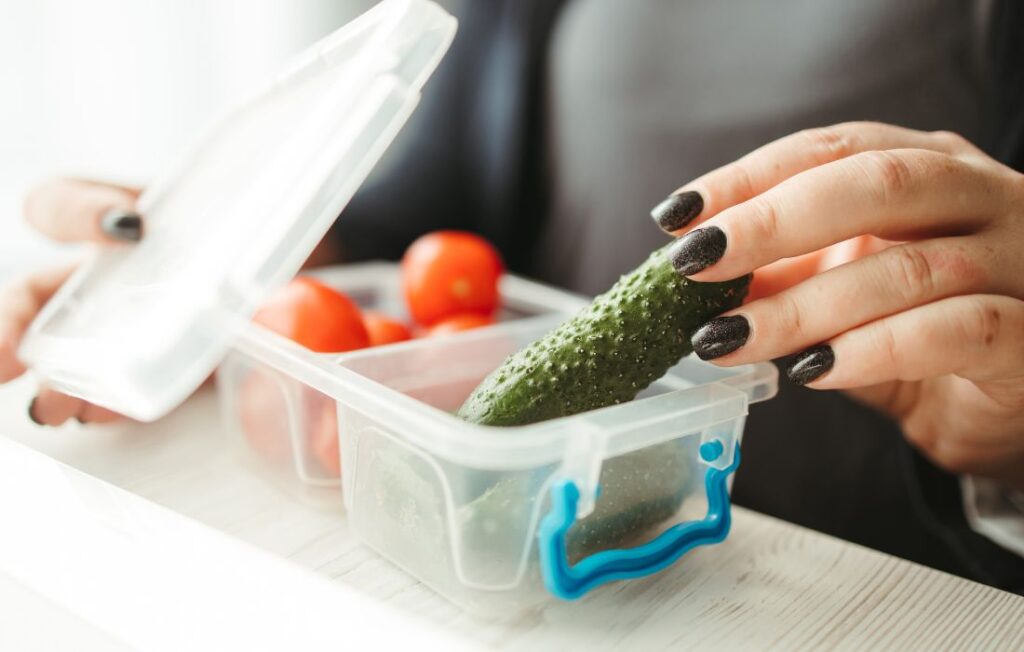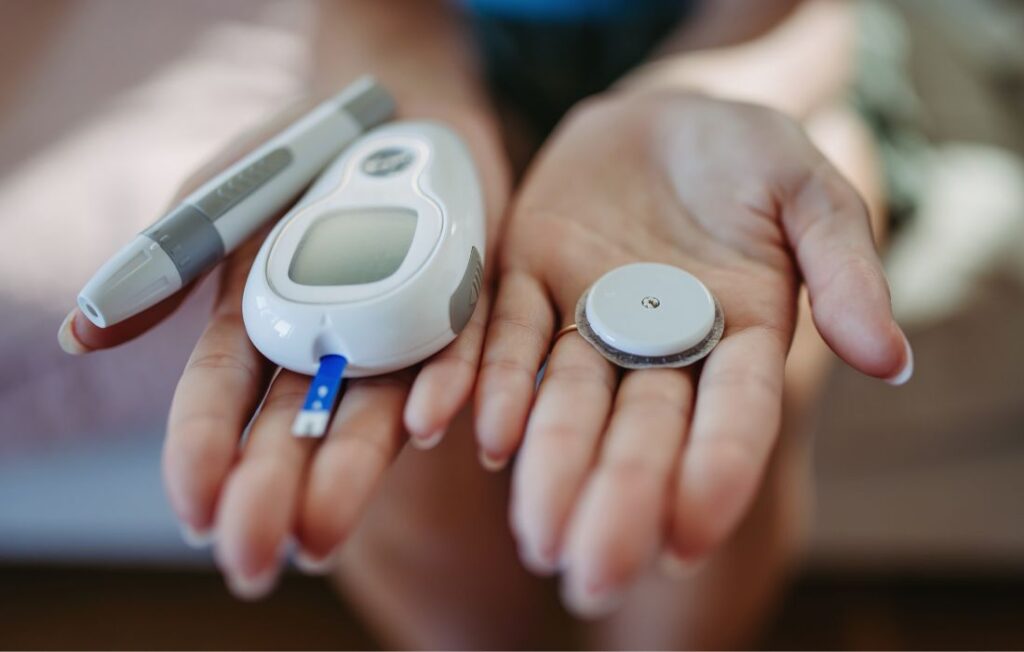Are you confronted with a gestational diabetes diagnosis and feeling overwhelmed?
Discover essential tips and proactive steps to manage your health and navigate this journey with confidence and support.
Receiving a gestational diabetes diagnosis can bring an overwhelming array of emotions, especially for individuals during a plus size pregnancy.
It's not uncommon for the initial reaction to be one of self-blame. However, it's vital to understand from the outset: you did nothing wrong!
Gestational diabetes arises from changes in the body's insulin responses, influenced by the complex hormonal and physiological shifts during pregnancy, including the placenta's role in altering insulin sensitivity. These alterations are part of the unique pregnancy journey, not a reflection of your lifestyle choices.
It's essential to recognize that gestational diabetes can affect anyone, regardless of size. And even if you entered pregnancy pre-diabetic or with existing diabetes, there's still no place for self-blame.
Your focus, first and foremost, should be on creating the healthiest environment for both yourself and your baby during this time.
By focusing on proactive management and self-compassion, you're taking the right steps, regardless of pre-existing conditions or challenges that may arise.
Gestational Diabetes Diagnosis To-Do List
Navigating through a gestational diabetes diagnosis involves embracing your emotions, arming yourself with knowledge, and engaging proactively in your care, all of which can be profoundly empowering steps along your pregnancy journey.
Gestational diabetes can increase certain risks during pregnancy, such as higher chances of high blood pressure, the baby growing significantly larger than average (macrosomia), and the potential need for a cesarean birth. There's also a heightened risk of the baby developing low blood sugar (hypoglycemia) shortly after birth and a higher likelihood of type 2 diabetes for both the baby and parent.
The purpose of sharing information about the increased risks is not to alarm you. It's crucial to understand that while these risks do exist, they aren't astronomical especially when you consider the distinction between actual risk and relative risk.
Our goal is to empower you with the knowledge necessary to navigate your pregnancy with confidence, ensuring that you feel supported in making informed decisions for your well-being and that of your baby.
And if you're ready, here's our helpful to-do list following a gestational diabetes diagnosis.
1. Process Your Emotions
This first step might seem unnecessary, but giving yourself space to process your feelings is essential.
A gestational diabetes diagnosis can trigger emotions from fear to guilt, and internalizing them can impact your mental health.
If you're upset, consider speaking with a mental health professional who specializes in perinatal wellness. Joining a support group (many on Facebook), or simply confiding in trusted friends or family members can also be helpful.
Remember, you are not alone, and your feelings are a natural response to your circumstances.
Understanding gestational diabetes can also be helpful.
As we shared, it's a condition that affects how your cells use sugar (glucose) during pregnancy, and it doesn't occur because of something you did or didn't do. Learning more about how and why gestational diabetes develops will help debunk myths and reduce any guilt you might be feeling.
2. Consult Your Healthcare Team
Managing gestational diabetes, particularly when it comes to taking insulin, is highly personalized. These medical decisions require conversations with your healthcare provider, who can offer guidance tailored to your specific health needs and circumstances.
We encourage you to collaborate closely with a size-friendly provider. They will guide you through managing your blood sugar levels, including nutritional guidance and physical activity recommendations.
Along with nutritional counseling, you'll likely see a maternal-fetal medicine specialist trained in caring for high-risk pregnancies.
Throughout all this support you might notice monitoring weight gain is emphasized because research links limiting weight gain to reducing pregnancy risks. And healthcare providers want to do all they can to mitigate risks.
However, discussions about weight can be emotionally challenging. If diet talk or weight-focused language is triggering for you, be sure to discuss any concerns and preferences, especially regarding a Health At Every Size® (HAES) approach, with your care team.
Along with conversations about weight, people also address concerns about needing an induction of labor.
Just as a cesarean birth isn't an automatic course of action for everyone with gestational diabetes, neither is a labor induction. The decision is nuanced, taking into account various aspects like how blood sugar levels are managed, estimated size of the baby, and maternal and fetal health.
If you have a preference against induction, unless it's a medical necessity, talk to your care provider throughout pregnancy, not just as your due date approaches. Look for any red flags indicating your provider isn't listening to your preferences, as it may signal a need to consider switching to someone more aligned with your birth plan.
Overall, while the frequent finger pricks for blood sugar monitoring may not be the most pleasant experience, many individuals find reassurance in the additional prenatal check-ups and surveillance throughout pregnancy.
3. Develop a Nutritional Plan
In many cases, gestational diabetes can be effectively regulated through careful attention to nutrition and engagement in physical activity, potentially eliminating the need for medication.
So, creating a balanced nutritional plan is crucial following a gestational diabetes diagnosis. But that doesn't mean harsh dieting or cutting out entire food groups. It's about nurturing yourself and your baby!
Consider working with a dietitian who embraces a HAES perspective and understands the importance of developing a sustainable, enjoyable plan tailored to your needs.
Along with staying hydrated and taking prenatal vitamins, here are some basic nutrition tips that are often recommended for individuals with gestational diabetes. Remember, these are general guidelines, and it's important to work with your care team.
Also, we want to acknowledge that some common suggestions (for example, reading and understanding food labels) can be triggering for those who have struggled with disordered eating. If possible, work with a HAES-informed nutritionist or dietitian, and be sure to share any concerns or triggers with your care team.
Basic Gestational Diabetes Nutrition Tips
Balance Carbohydrates: Carbohydrates have a significant impact on your blood sugar levels. Understanding that complex carbohydrates are metabolized slower, supporting a more stable blood sugar response, can be helpful.
Examples of complex carbohydrates are whole grains, brown rice, and legumes. Also, spreading your carbohydrate intake evenly throughout the day can help prevent spikes in blood sugar.
Focus on Fiber: High-fiber foods are good for digestion and help regulate blood sugar levels. Vegetables, fruits with the skin on, whole grains, and nuts are excellent sources of fiber.
Include Protein: Each meal and snack should contain protein whenever possible. Protein is crucial for your baby's growth and can also help keep your blood sugar levels stable. Protein sources include lean meats, chicken, fish, eggs, dairy products, nuts, seeds, and legumes.
Incorporate Fats: Avocados, nuts, seeds, and olive oil are sources of monounsaturated and polyunsaturated fats that are beneficial for your heart health.
Monitor Sweets: You don't need to ban sweet foods or drinks, but it's important to recognize their effects on your blood sugar levels. Enjoy a variety of foods, savor your favorites, and be mindful of how your body feels.
Meal Timing & Portions: Smaller and more frequent meals throughout the day can help manage your blood sugar levels more effectively. Be sure to connect with your hunger and fullness cues and observe how different foods fit into your broader eating patterns, allowing for a more compassionate and nurturing approach to your dietary choices.
Want to dig in deeper? See our gestational diabetes nutrition tips from registered dietitian and diabetes educator Lily Nichols and listen to her Plus Mommy Podcast interview.
Searching for recipes? Pinterest is a fantastic resource – just do a search for gestational diabetes recipes.
4. Discover Joyful Movement
For those already engaging in regular physical activity, that's fantastic! It's always wise to consult with your healthcare provider to ensure your current regimen is safe to continue during pregnancy.
If you haven't been very active, no worries. The good news is exercise is highly beneficial for managing gestational diabetes, and it doesn't have to be a strenuous or regimented chore.
Regular, moderate exercise has even more benefits, including helping boost mood and energy levels by releasing endorphins and reducing pregnancy-related discomforts such as backaches, swelling, and constipation. It can also improve sleep quality, which is a huge bonus!
Find activities that make you feel good, whether walking, swimming, yoga, or dancing. The goal is to incorporate movement in an enjoyable way that enhances your overall well-being.
The American College of Obstetricians and Gynecologists recommends at least 150 minutes of moderate-intensity aerobic activity (like brisk walking) weekly for pregnant individuals who are not already highly active.
Here's a sample breakdown of how you can integrate that exercise target into your weekly routine.
Weekly Exercise Routine Example
- Monday: Take a 30-minute brisk walk in the morning or evening.
- Wednesday: Spend 30 minutes doing a prenatal yoga session to help with flexibility and relaxation.
- Friday: Another 30-minute walk or perhaps a swim, which can be incredibly relieving for the added weight of pregnancy.
- Sunday: A 30-minute session of another aerobic activity you enjoy, like a prenatal dance class on YouTube, coupled with a 30-minute evening walk.
This approach makes managing your exercise routine more feasible, with smaller goals that can fit into your daily schedule.
Always listen to your body's signals and adjust the intensity and duration, ensuring you're comfortable and not straining yourself. And, of course, any modifications or specific recommendations your healthcare provider suggests should come first.
We have a helpful list of plus size pregnancy exercises and movement suggestions you can even do from home.
5. Monitor Your Health
You'll need to monitor your blood sugar levels regularly. Understanding your body's responses to different foods and activities is key to managing gestational diabetes.
While regular blood sugar checks are vital, they're not your entire story. Acknowledge the numbers, and keep celebrating your overall progress.
How Monitoring Usually Works
Frequency: Your healthcare provider will give specific instructions on how often you should check your blood sugar. Commonly, women with gestational diabetes are advised to test their blood sugar levels several times a day, such as first thing in the morning and then one to two hours after each main meal. It can be helpful to set an alarm on your phone after you eat, so you don't forget to test.
Using a Glucometer: Blood sugar levels are usually measured using a glucometer. This involves pricking your finger with a small, sharp needle (called a lancet) to collect a drop of blood. You then place the blood on a test strip inserted into the glucometer, which reads your blood sugar level.
Recording Your Levels: Keeping a log of your blood sugar readings and noting what you eat and how much you exercise can help you and your healthcare team determine how well your management plan is working and whether any adjustments are needed.
Logging food and monitoring blood sugar can sometimes trigger anxiety or obsessive behaviors related to food or body image. If you find this process distressing, bringing these concerns to your healthcare provider is crucial.
Remember, the goal of monitoring is your overall health and that of your baby, and this includes a mindful approach that considers your history, challenges, and emotional responses.
Adjustments to Your Care Plan: Based on your logged readings, your healthcare provider might adjust your meal plan, activity suggestions, or medication (if you are taking any for your gestational diabetes).
Gestational diabetes usually resolves after giving birth, but discussing postpartum care with your healthcare provider is still important. This can include monitoring blood sugar levels, supporting mental health, and understanding how nutrition contributes to healing and wellness.
6. Advocate for Yourself
You deserve respect and comprehensive care during this journey.
Advocate for yourself if you feel stigmatized or judged because of your body size. Seek healthcare professionals who provide respectful, person-centered care and don't settle for anything less.
Consider enlisting the support of a doula, an invaluable ally who can offer additional advocacy, support, and personalized resources throughout your pregnancy.
You're taking numerous steps to ensure your health and your baby's, and that is commendable.
7. Build Your Support Network
Surround yourself with people who support and uplift you, and set healthy boundaries with those who don't. This supportive circle will be crucial during your pregnancy and equally valuable as you navigate the various stages of parenthood!
Whether through friends, family, healthcare professionals, or support groups, having a network to share your experiences with can be profoundly beneficial.
Remember, a gestational diabetes diagnosis is not a personal failure. It's a health condition that requires management and care.
By taking these steps, you prioritize your well-being and your baby's health, which matters most.
This journey may have its challenges, but it's also an opportunity to embrace the support around you and the strength within you. You've got this!
References
- Rasmussen L, Poulsen CW, Kampmann U, Smedegaard SB, Ovesen PG, Fuglsang J. Diet and Healthy Lifestyle in the Management of Gestational Diabetes Mellitus. Nutrients. 2020 Oct 6;12(10):3050. doi: 10.3390/nu12103050. PMID: 33036170; PMCID: PMC7599681.
- Davenport MH, Ruchat SM, Poitras VJ, et al. (2018) Prenatal exercise for the prevention of gestational diabetes mellitus and hypertensive disorders of pregnancy: a systematic review and meta-analysis. Br J Sports Med. 2018;52(21):1367‐1375.
- High BMI Early Gestational Diabetes Test – Is It Really Needed? - April 26, 2024
- Gestational Diabetes Diagnosis: What Now? A Helpful To-Do List! - October 18, 2023
- Navigating Miscarriage and Self-Blame as a Plus-Size Individual - October 16, 2023










